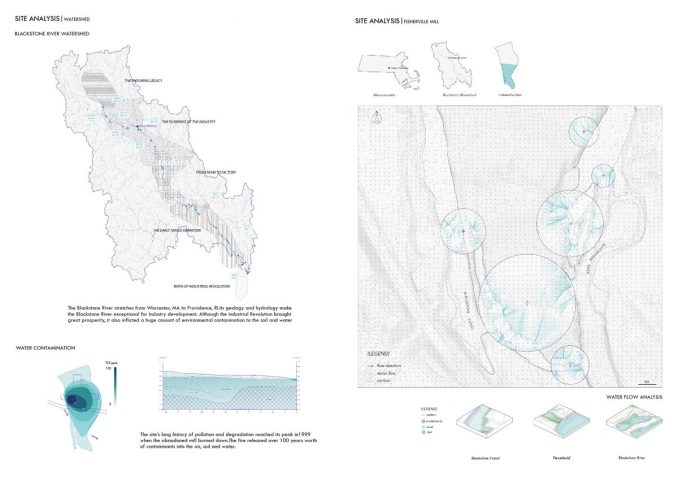
Rivers are layered landscapes that represent how many communities have interacted with the land, natural resources, and one another. Shifting values regarding stewardship, control, extraction, and restoration have become physically represented in the environment through river shaping, both intentional and unintentional. The project’s focusing site Fishersville mill is situated on the Blackstone River watershed which has interwoven history of industry and nature. The Fishersville mill is an abandoned mill burned down in 1999. The fire released over 100 years’ worth of contaminants into the air, soil, and water.
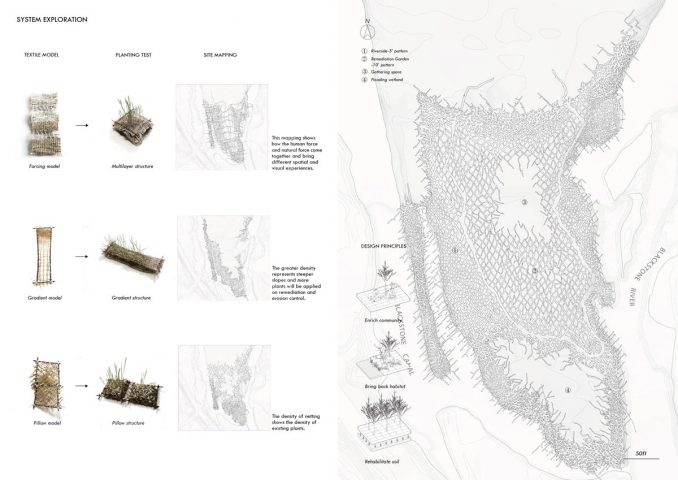
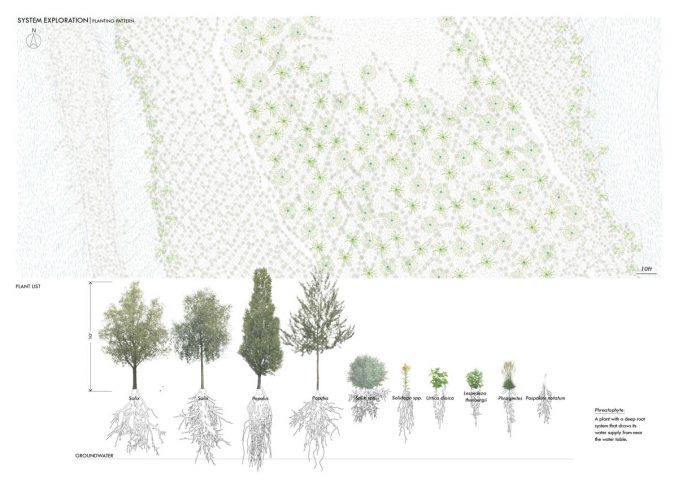
This project reconsiders the relationship between textiles and landscape architecture practices to address, reconcile and interpret the complex ecological and cultural histories of Blackstone River. The project’s goal is through the study and practice of geotextile to rehabilitate the polluted land along the Blackstone River and apply a dynamic growing system to the site to heal the contaminated soil and bring back resilient ecosystems. By calling on people back to land’s green vision and participating in the process of healing the ground, the pre-industrial polluted ground will be hopefully renewed and, in the process, redeem the healthy ecosystem.
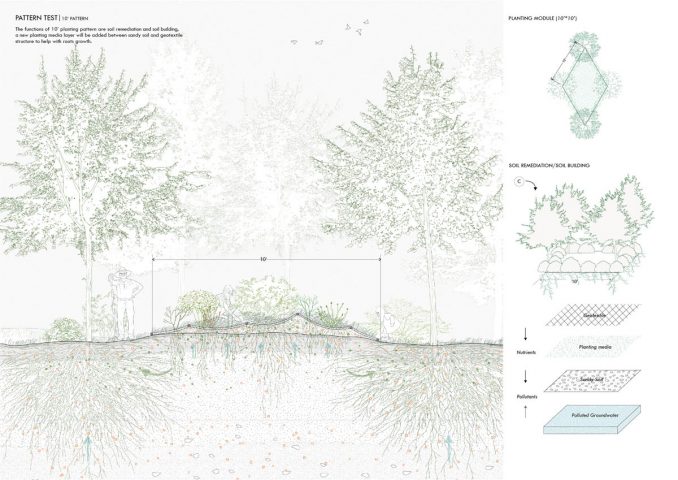
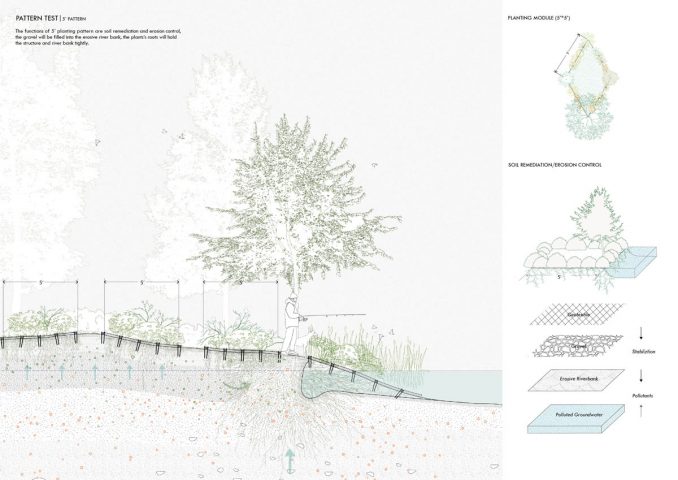
The concept of ground patchwork came up with the process of learning textile technology, through weaving the ground the isolated parcel will be reconnected by the different types of planting patterns. The planting patterns typologies have diverse practical and aesthetic values, for instance, the 10’ pattern in the central area is used for soil building and the functions of the 5’ pattern along the riverside are erosion control and soil reinforcement. As for fabrication, a community workshop will be held to teach residents how to weave the planting pattern and install them on the site, community members can choose their favorite patterns and do the weaving, after the workshop, the whole site will be filled with diverse ground patchwork. The plant species with deep root systems will be planted on the pattern to remediate soil, the ground healing is a dynamic process that will start from weaving to growing, healing, and spreading. In the proposal, the pattern will be modified by nature and time, and be decomposed, so the plants can expand to other spaces and heal more ground.
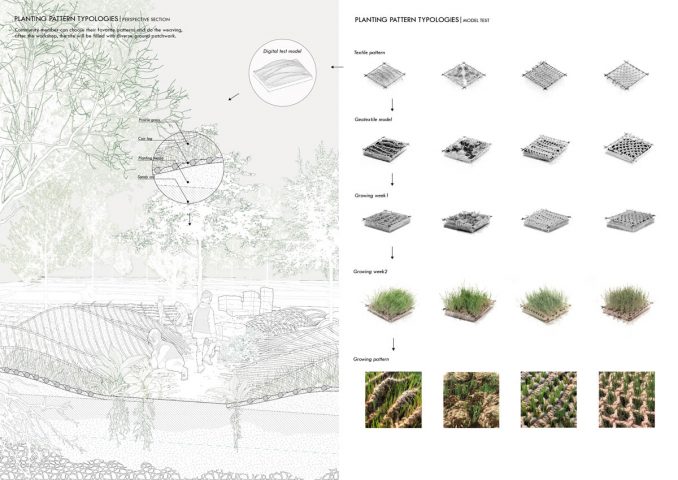
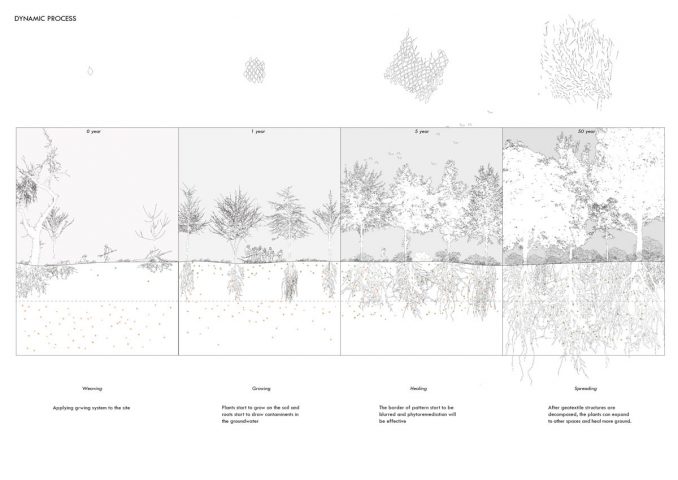
Ground Patchwork
Student Name: Yuxiao Liao
School: Rhode Island School of Design
Advisor: Emily Vogler
